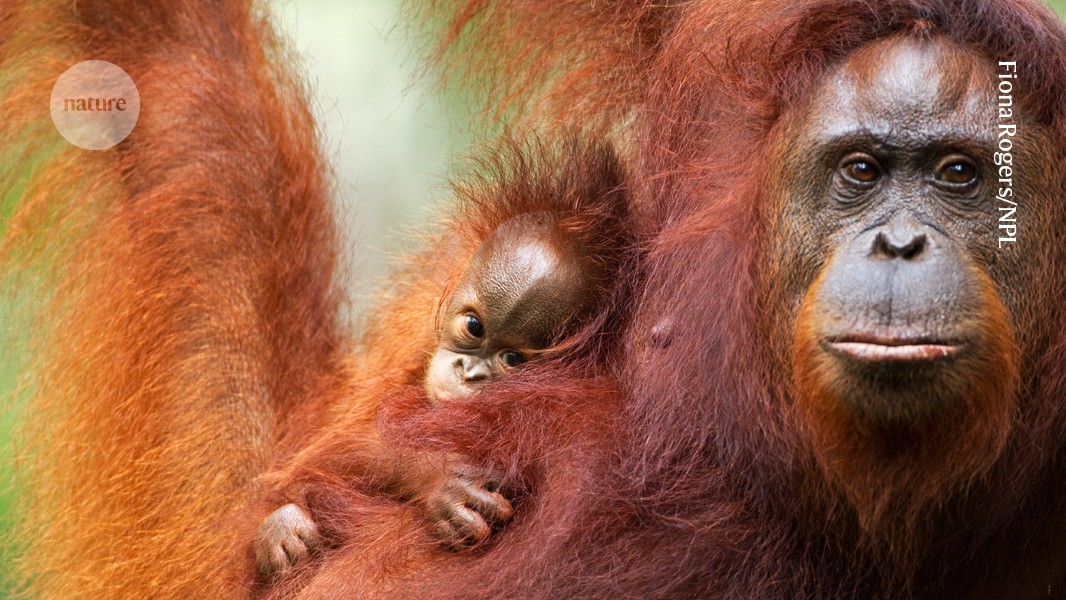What makes us human? Milestone ape genomes promise clues

DNA sequences for the chimpanzee, orangutans and more will help scientists to determine what sets humans apart from other apes

Conservation of critically endangered Bornean orangutans could be aided by the sequencing of the creature’s genome.Credit: Fiona Rogers/Nature Picture Library
After more than two decades of work, researchers have achieved a genetics milestone: they have successfully sequenced the complete genomes of six ape species, a feat that seemed impossible just a few years ago1.
The results, published today in Nature by a team of 123 researchers spread across multiple nations, are expected to aid ape conservation efforts and advance scientists’ understanding of how humans differ from other apes.
“I’ve never thought that this would be accomplished in my lifetime,” says Kateryna Makova, an evolutionary geneticist at Penn State University in University Park, Pennsylvania, and a co-author of the study, who has been working to assemble complete sequences of ape genomes for almost 25 years.
Close human relatives
A genome is the complete set of DNA instructions found in a cell, and sequencing it means determining the identity and order of the building-blocks in each molecule of DNA. After scientists succeeded in sequencing the human genome in 20012, they quickly began working on the genomes of other apes — the closest genetic relatives to humans.
Understanding the genomes of non-human apes is crucial because it gives geneticists insights into human evolution and the genetic factors that differentiate us from other apes, says Makova. In medicine, for instance, scientists frequently study the variations in ape DNA that make the animals resistant to certain diseases, such as AIDS.
In the past, scientists had deciphered segments of non-human apes’ genomes, but they had never managed to assemble a complete sequence for any species. In the current study, however, Makova and her collaborators used advanced sequencing techniques and algorithms that allowed them to read long segments of DNA and assemble them into a sequence that stretched from one end of each chromosome to the other, without any gaps. “This has never been done before,” says Makova.

The chimpanzee is one of humanity’s closest living relatives, and its genome promises to shed light on human evolution.Credit: Fiona Rogers/Nature Picture Library
Using these techniques, the authors decoded the genomes of six ape species: chimpanzee, bonobo, gorilla, Bornean orangutan, Sumatran orangutan and siamang gibbon. The scientists discovered between 770 and 1,482 possible new genes for each species. They also found unusual DNA structures lurking in previously inaccessible regions of the genome.
“This is a very important moment,” says evolutionary biologist Liliana Cortés Ortiz at the University of Michigan in Ann Arbor, who was not involved in the study. The full genomes should allow for more detailed study “that will help us understand the evolution of different primate lineages”, Cortés Ortiz explains.
Enjoying our latest content?
Login or create an account to continue
- Access the most recent journalism from Nature's award-winning team
- Explore the latest features & opinion covering groundbreaking research
or
Sign in or create an accountdoi: https://doi.org/10.1038/d41586-025-01079-y
Listen to the related podcast, ‘Long-awaited ape genomes give new insights into their evolution — and ours’.
This story originally appeared on: Nature - Author:Humberto Basilio


















